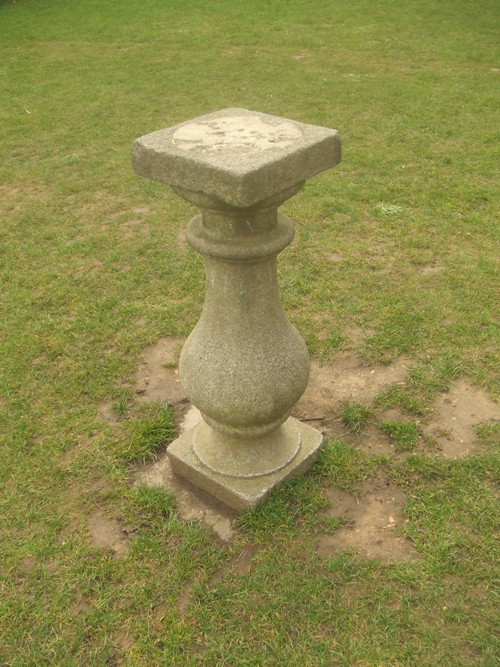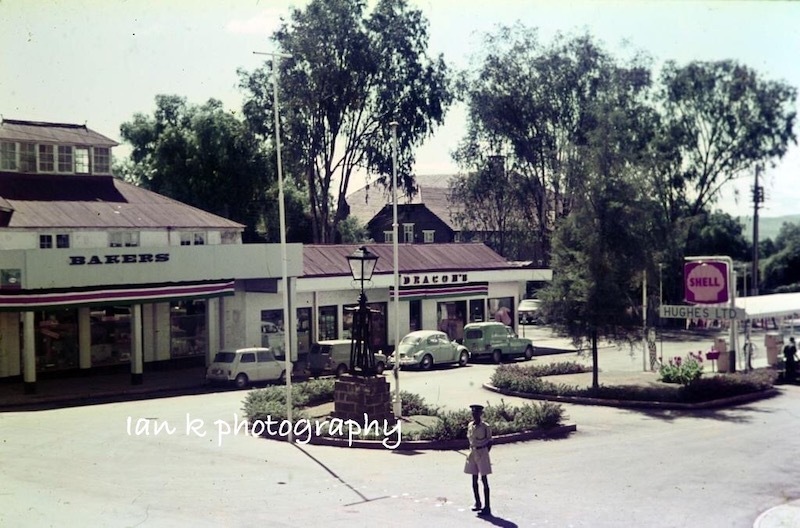Everyone knows that the previous London Bridge ended up in America. But what happened to the old Waterloo Bridge?

The current Waterloo Bridge was designed by Sir Giles Gilbert Scott. It was built during the second world war, largely by women.
Scott's bridge replaced the original early 19th century version by John Rennie (the same architect whose London Bridge now stands in Arizona). Its demolition in the 1930s freed up hundreds of thousands of tons of stone. But where did it all go?
UPDATE July 2022: We've added many additional discoveries to this article since it was first published. If you think you know about a piece of the bridge that hasn't already been mentioned, please see below about how to get in touch.
Bridges to the world
The break up of Rennie's bridge began in 1934. Almost immediately, heavy blocks of stone were sent overseas, "presented to various parts of the British world to further historic links in the British Commonwealth of Nations".
According to the Aberdeen Press and Journal (22 Aug 1934), "Orders for balusters and other stonework have already been received from the United States, South Africa and New Zealand, as well as from many parts of Great Britain".
A less buoyant analysis was given by Dundee Evening Telegraph a year later. "Canada didn't want any. New Zealand was willing to have one block of granite, and Australia took a few more. Two lamp standards have gone to Rhodesia, and Limbe Town Council, Nyasaland, asked for two balusters."

New Zealand might have only taken a single piece (update... it took more, see below), but it put it to exemplary use. This memorial to 'Paddy the Wanderer', a much-loved dog who lived in Wellington in the 1930s, is made out of stone from the bridge. It provides a pair of water bowls for four-legged Wellingtonians to this day.
Australia hid its stones underneath the Commonwealth Avenue bridge in Canberra. Their romantic situation can be seen on Street View. There's something of the sacrificial alter about this scene.

Out On The Moor
Only a tiny fraction of the stones were sent overseas as gifts. The greatest bulk was stored out in Harmondsworth Moor (now in Hillingdon). Much of this stockpile finally found a use in 1945, when it was shipped over to the Netherlands to help repair bridges destroyed by the Nazis.
Many of the blocks still remain on the moor, dotted around here and there. One block has been turned into a war memorial, marking the site where a Canadian bomber crashed in 1943 with the loss of all seven crew.

Nearby, a ring of granite blocks from the old bridge have been turned into a sort of henge, known as the Giant's Teeth. It's a fascinating area to wander round. As well as the bridge relics, look out also for the medieval barn and the memorial to Barnes Wallace of bouncing bomb fame.

The moor once contained many further blocks from the bridge. According to Harlington and Harmondsworth - History & Guide, by Philip Sherwood, "Some of the stones were used by an enterprising company set up nearby to make fireplaces, but most of those that remained were crushed to provide aggregate for the construction of the M25 motorway in the mid 1980s." We're indebted to reader Hylton Garriock for the information.
Other London locations
Some of the leftovers found reuse in the London region. Hundreds of stones were delivered to St Mary Cray (now in Bromley) for construction of a cemetery wall. One of the cornerstones, meanwhile, travelled to Wanstead. It supports the metallic, fat-necked noggin of Winston Churchill.

Or visit the Institution of Civil Engineers in Westminster and you can still see the keystone to Rennie's bridge smartening up a wall recess.

Bye-bye balusters
Even the bridge's ornamental elements were recycled. The balusters — those upright stone barriers that look like chess pieces — were particularly sought-after. Anyone could turn up at the construction site and take one home for £1, with the money going to London County Council. As the supply dwindled, stone merchants would sell on their relics for up to £10.

Hundreds of balusters were recirculated in this way. They no doubt still survive in obscurity, hidden in private gardens, supporting birdbaths and sundials. One was sent to Aberdeen Town Hall, as a thank you for supplying all that granite in the first place.
A few balusters can be seen in public spaces. We photographed the one below in Antrim Park (in Belsize Park), where it shares a lawn with a fragment of the old House of Commons.

Surviving remnants under Waterloo Bridge
As with Old London Bridge, some of the material from Rennie's original was left in place to help form the foundations and approach roads for the modern span. One section can still be seen on the north bank, directly under the carriageway. Here, a row of recycled granite blocks and balusters form part of the Embankment wall. The structure gives a small flavour of how the 19th century bridge might have appeared.

And the rest of it?

Not all the stone could be reused in block form. The supposed granite structure turned out to be partly sandstone underneath. Much was broken down and sold on as rubble or, as shown in the advert above, 'crazy paving' materials.
The rest, according to one press account, "Will be made into kerbs and gravestones". Who know, perhaps your own street or driveway is paved with the relics of Old Waterloo Bridge.
Reader sightings of Waterloo Bridge
Further chunks of the bridge have come to light since this article's original publication. We'll add them into this section, whenever someone gets in touch.
New Zealand
Mike Wicksteed sends news of another fragment in New Zealand. Head up Mount Victoria in Wellington, and you may chance across this viewing platform. The granite wall is a relic of the old bridge.

Yet more pieces in New Zealand have been brought to our attention by Austin Gee. He highlights a memorial to former Prime Minister Gordon Coates at Brynderwyn, north of Auckland, which uses stones from a bridge pier, and the pedestal of a sundial in Oriental Bay, Wellington.
England
Much closer to home, Jon Rowles notes this memorial stone in Heathfield Recreation Ground in Whitton (part of the Borough of Richmond). The stone was placed here in 1937 to mark the coronation of George VI.

Tim Childs discovered another one of the balusters lurking in the gardens of Alfriston Clergy House near Seaford. The stone support is now used for a sundial.

Bill Rowland of Putney Heath has a very similar sundial-on-baluster set-up in his garden, with a plaque confirming its origin as a parapet of Old Waterloo Bridge. He acquired the baluster about 15 years ago from the previous owner, also in Putney.

Tom Edmondson acquired a more unusual relic of the bridge. He has an elm bowl, crafted from material salvaged from the bridge, as attested by a plaque on its base.

Bill Housdon has another wooden fragment from the bridge's foundations. This time, it's in the shape of a tobacco jar. The attached plaque reads: "Made from silver Grey Elm, taken from the foundations of the famous bridge".

Perhaps the most impressive wooden salvage can be seen in Anglesey Abbey near Cambridge. Reader Susan Griffith sends a snap of this notice, which suggests that the mansion's book cases are crafted from rescued timbers.

Keith Martin has a possible mooring stone from the bridge. Its curved shape and weathered base are certainly suggestive of this use. The stone, and another, come from Harmondsworth, close to the other stones mentioned above.

Mexico
Anthony Cazares got in touch in July 2022 with our first recorded bit of bridge in Mexico. The baluster has sat in the garden of Las Mañanitas hotel in Cuernavaca (south of Mexico City) since at least 1955. How it came to be there is something of a mystery.

Kenya
Ian Kinghorn, meanwhile, thinks he might have found another piece of the bridge that was sent out to a Commonwealth country. According to Ian, "I was born and brought up in Nakuru, Kenya during the 1950s when it was a British colony and have always been intrigued by an ornate lamp standard placed on a central reservation on Club Road, Nakuru - see photograph below. The rumours during the 1950 & 60s was that this ornate light had come from the old Waterloo Bridge that was demolished in 1934." It's unconfirmed, then, but this lamp standard may well be a piece of the bridge.

Australia
Some support for this local legend comes from far-away Adelaide, whose bona fide Waterloo lamp has a similar design. Reader Mark Lawrence sends us the following photographs of the lamp, gifted to the Australian city in 1936.


Zimbabwe
Further lamps seem to have made their way to Rhodesia, now Zimbabwe. Rob Burrett alerts us to a pair at the entrance to Centenary Park in Bulawayo (left and bottom image below). "Previous to their relocation in 1975, the pair of standards were at the nearby entrance to the Bulawayo Bowling Club," he tells us.

Rob has also identified two other lamps in Harare. "Two lamps standards were located outside the old Queen Victoria Museum," he explains. They followed the museum to its relocated home, now the Museum of Human Sciences. "One standard can be seen in the museum and another broken fragment is outside the back. Both are unlabelled and forgotten. Lots of people have resisted my ID but [an] old magazine article (pictured above) confirm this".
Rob has also found a solitary stone from the old bridge, this time in Gweru (formerly Gwelo) in central Zimbabwe. The stone can be found under the entrance archway of the old council offices.

Spotted a piece of Old Waterloo Bridge? Do leave a comment below, or email [email protected] with details.




